This post may contain affiliate links. This just means I may receive a small commission at no extra cost to you for helping them promote their product or service. I don’t endorse any services I don’t personally use or recommend.
Due to their ever-dwindling numbers, the opportunity to see Orangutans in the wild is a bucketlist-worthy event. But where to see Orangutans in the wild? And where is the best place? Because this is one of those experiences worth planning an entire trip around. Fortunately, I’ve been to both Indonesian Borneo and Sumatra, the only two places in the world to see these majestic orange apes, and I can help you decide which route is the best for you. Both experiences are A M A Z I N G, and I think both are well worth doing, but they are polar opposites regarding what to expect regarding physical fitness, cost, and ruggedness.
Let’s talk orangutans.
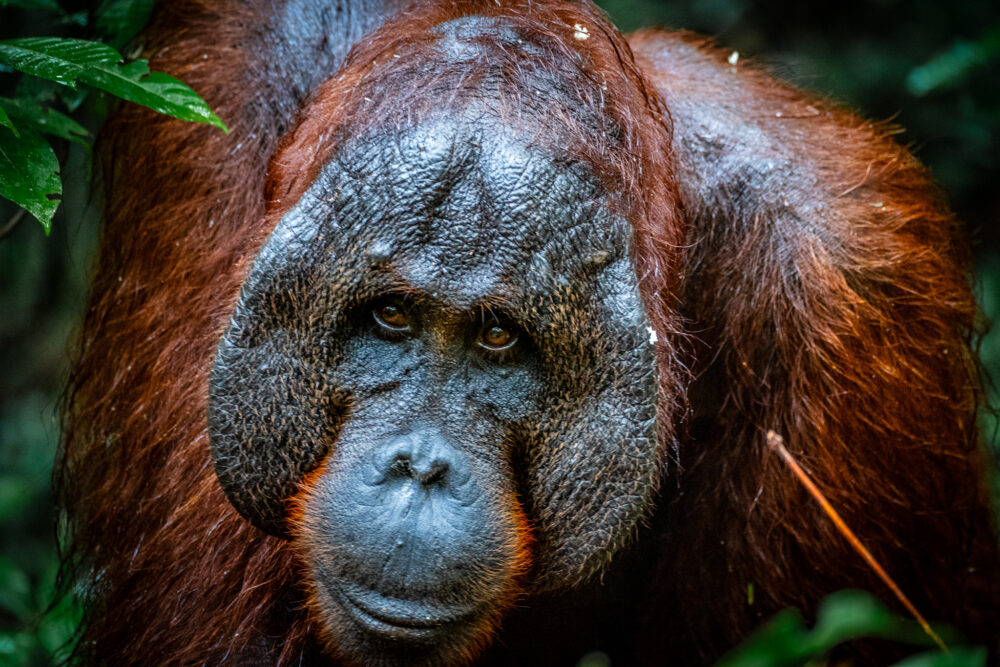
Where to See Orangutans in the Wild
There was once a time when Orangutans were found all across Southeast Asia into southern China. But over time, the climate changed, and the fruiting jungle landscape that sustained them moved southward, predominantly into the islands of Indonesia. Today, thanks to a wide array of factors, including hunting, massive deforestation, and habitat loss, they are only found on the islands of Borneo (Malaysian and Indonesian sides) and Sumatra, Indonesia.
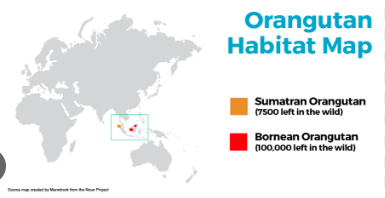
Wild Orangutans vs “Semi-Wild” Orangutans
You’ll see this distinction made a lot. But what is a semi-wild orangutan? It’s a habituated orangutan that has spent some or all of its life living around people. This could be a case where the Orangutan was rescued from captivity and re-released into the wild, or it could be one of the subjects studied at a jungle research center like Camp Leakey. When I say “studied,” I literally mean following around and watching. Not caged and poked and prodded, these scientists were just observing their natural behaviors.
Semi-wild Orangutans are just as incredible to see as wild ones, in my opinion. But for those who want to spot an Orangutan that has never become accustomed to humans, both the destinations I will cover in this blog post have the opportunity to spot wild and semi-wild Orangutans.
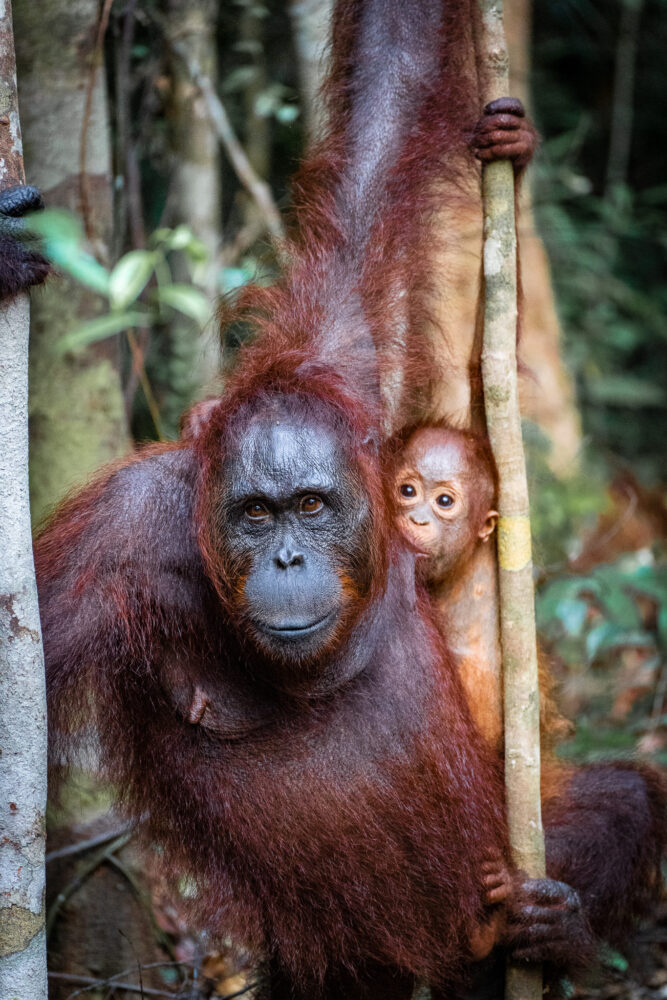
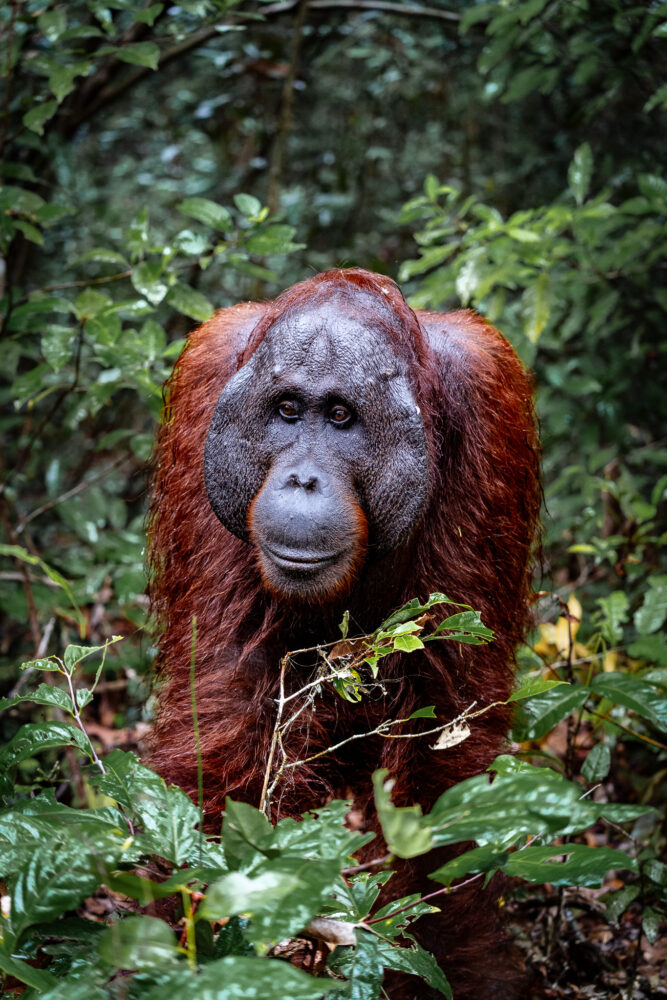
Who is Birute Galdikas?
This woman is the Jane Goodall of Orangutans—literally. She was a young scientist who was funded by the same man (Louis Leakey) to do the very first comprehensive study of Orangutans in the world. She then proceeded to move into the forests of Indonesian Borneo and study Orangutans on her own for nearly 50 years. Thanks to her, and pretty much her alone, we know anything about these elusive apes.
Reading her book Reflections of Eden was what inspired my first trip to Borneo.
Is it all the same kind of Orangutan?
There are three different subspecies of Orangutans. Two in Sumatra and one in Borneo. The Tapanuli orangutan from Sumatra is super rare to see and is only found near Lake Toba. Tourism is mostly developed around the Sumatran and Bornean subspecies and these are much more numerous than the third one.
But Can’t I See Orangutans in Malaysian Borneo?
Technically, yes. The lowland areas of Sabah, Malaysian Borneo, do have orangutans, but to be honest, we didn’t meet a single person in our travels who had success in Malaysian Borneo.
This is probably because most people plan their safaris in the Danum Valley Conservation Area (the best for all other species), but there are few orangutans there. Instead, I recommend trying the Kinabatangan Wildlife Reserve. The safari here is very much like the Indonesian Borneo one I will describe below, but the odds of spotting the orangutans are just lower. Another slightly less likely option is the Maliau Basin Conservation Area which is an incredible slice of pristine wilderness, although that does make them difficult to find.
All National Parks/Conservation Areas You Can See Orangutans in the Wild
These are all the places in the world that orangutans live, so technically these are the places you could potentially see them.
- Tanjung Puting National Park, Kalimantan
- Gunung Leuser National Park, Sumatra
- Batang Gadis National Park, Sumatra (Tapanuli orangutan)
- Batang Ai, Sarawak
- Maliau Basin Conservation Area, Sabah
- Kinabatangan Wildlife Reserve, Sabah
- Danum Valley Conservation Area, Sabah
- Camp Leakey, Tanjung Puting National Park (Not Wild)
- Matang Wildlife Centre, Sarawak (Not Wild)
- Semenggoh Wildlife Centre, Sarawak (Not Wild)
- Sepilok Orangutan Rehabilitation Centre, Sabah (Not Wild)
I have experience with Tanjung Puting and Gunung Leuser National Park, which also harbors the highest chances of seeing primates. So, we are going to focus on those two.
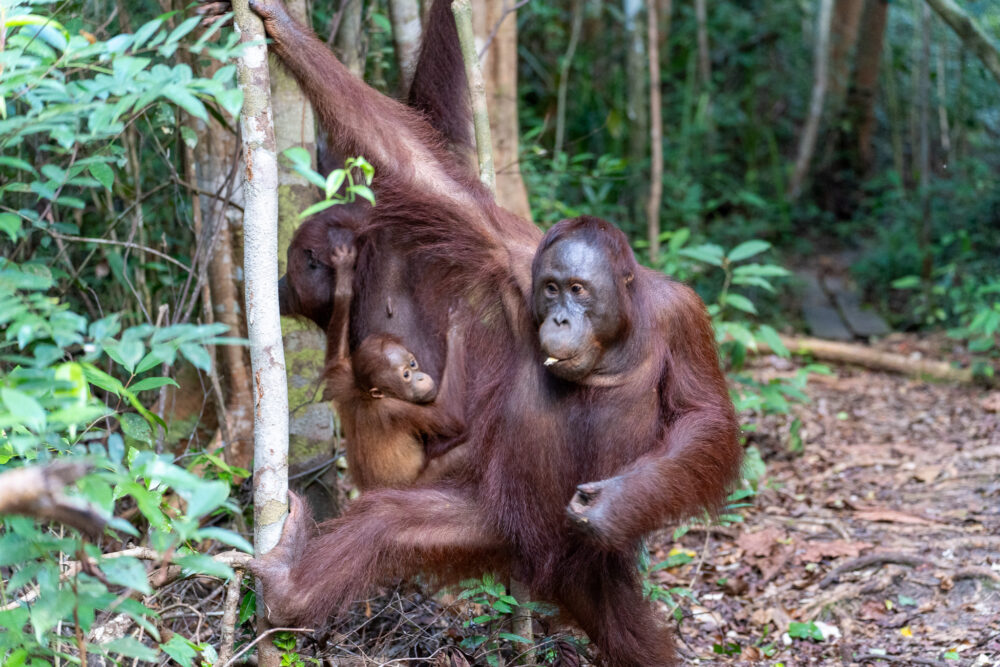
Choosing a Tour Operator
I did in-depth research for both destinations to choose a reputable tour operator at a reasonable price. I wanted my tours to be ethical and help protect Orangutans without harming their habitat. This is why I chose Orangutan Trekking Tours in Borneo and Sumatra Orangutan Explore. You won’t find better prices while also adhering to the best practices for protecting and preserving the primates.
I fully recommend both companies. They operate in Tanjung Puting National Park in Borneo and Gunung Leuser National Park in Sumatra. Two of the best places to see Orangutans in the wild.
Let’s compare and contrast my experiences with both companies in the two different destinations below.
Let’s Compare Sumatra & Borneo’s Orangutan Experiences
Read More: I have full blog posts for each of the experiences that deep dive into what to expect if you would rather read in depth. Here’s the one for Sumatra and the one for Borneo.
But if you’re still deciding between the two, let’s take a look at the different factors.
- Price.
- Ease of travel. (Getting to the destination)
- Amount of hiking.
- Sleeping arrangements.
- Length of trip.
- Proximity to the Orangutans during sightings.
- Ethics and wildness.
- Other wildlife to spot.
- Other things to see and do in the area.
- Family Friendliness.
Overview of Sumatra vs Borneo
Here’s a quick summary of each experience so you know what to expect.

Orangutans in Borneo with Orangutan Trekking Tours
This semi-luxurious experience is done mostly by boat. You’ll spend most of your time on a traditional Klotok boat drifting through the jungle via cleared channels. During the few days on board, you’ll fish, visit villages, stop at Orangutan feeding stations, and search for wildlife in the jungles around you. All meals are served on deck by a local chef, and you’ll take guided walks in pretty areas known for their wildlife sightings.
Orangutans in Sumatra with Sumatra Orangutan Explore
You’ll set out on foot into Bukit Lawang National Park from the riverside jungle lodge. For the most part, the path will be a single-file dirt trail snaking through the jungle, up and down steep, densely forested hills. You’ll spend your days searching the treetops from the muggy ground below for signs of orange fuzz or other primates. You’ll eat, sleep, and relax immersed in nature for the duration of the trip.


Price of Excursion
Honestly, this is the deciding factor for almost everyone. Because the price tags between the two experiences are incredibly different.
Sumatra: $222 per person for the 3-day/2-night trek + 2 days in the jungle lodge.
Borneo: $1,150 per person for the typical 4-day/3-night excursion.
While these are the recommended tour lengths for both activities, there are cheaper, shorter excursions for the Sumatra Orangutans only.
So, obviously, as a couple, spending $2,300 on an orangutan tour is not for everyone. Sumatra is FAR more budget-friendly than Borneo. Sumatra’s price tag also includes your accommodation the night before and after your trek in the beautiful and remote jungle lodge.
Winner on Price: Sumatra
Ease of Travel
I’ll be honest, neither destination is a piece of cake to reach. But when compared to the attractions in Sulawesi, Indonesia– easy peasy.
For Sumatra, you must fly into Medan. An unfortunately dismal city in the North of the island. You can reach it easily from Malaysia, Java, Bali, or pretty much any other airport in the region. From there, you’ll have to take a local bus along rutted roads for around 2 hours. Sumatra Orangutan Explore will then pick you up on motorbike and bring you to the jungle lodge.
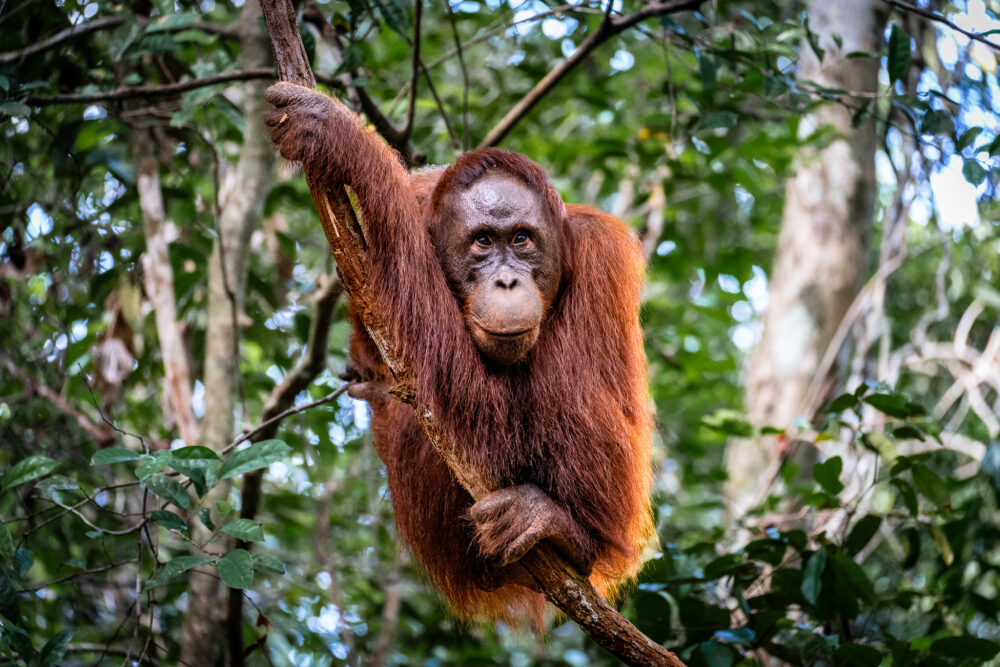
For Borneo, you fly into Pangkalan Bun. An equally charmless town. But Pangkalan Bun is only accessed from the island of Java for the most part and only on small local planes. There are considerably less flights. But once you reach town, you’ve made it. From here, Borneo Trekking Tours will guide you by boat.
Winner on Ease of Travel: Tie
Amount of Hiking or Physical Fitness Required
The Borneo adventure requires little hiking and very low levels of physical fitness. You will spend most of your time on groomed trails and on a boat.


On the other hand, Sumatra was a grueling jungle hike that lasted days through rough terrain. You need a very high level of physical fitness. I’ve never sweat so much in my life. It was 100 degrees and humid, and I was crawling my way up a mountainside through leech-infested jungles. You will want to be in slightly above-average shape for this one. It’s definitely doable, but don’t underestimate it. We hiked about 8 miles each day.
Winner for those who want a relaxing time: Borneo
Sleeping Arrangements
Sumatra is a rugged camping-style situation. You’ll rough it in individual tents set up for you in the jungle’s depths near a river. Prepare to sleep on the ground.
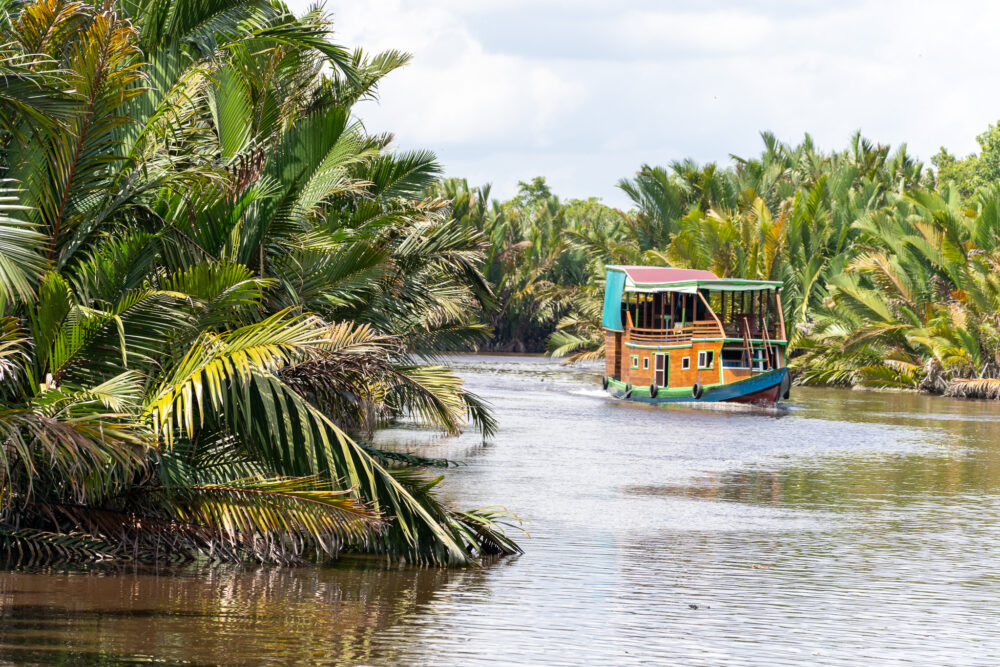
Borneo is a luxurious Klotok boat. This traditional Indonesian boat has one large bedroom and beds that can be set up on the open deck, which is enclosed with mosquito nets.
Winner for Comfort of Accommodation: Borneo
Minimum Length of Trip
In this scenario, both Orangutan options are pretty comparable. You can conceivably take a 5-7 day trip for either experience. Depending on where you are traveling from, you might want to add some additional sights in other destinations (I have a small section on that later), but that is up to you.
Winner for Trip Length: Tie
Proximity to Orangutans During the Sightings
In Sumatra, you will likely never be within 30 feet of an Orangutan. The thick jungle allows the orange primate to slip away easily or crawl up a tree into hiding. Most sightings are at a distance while they are lounging in a tree and you are on the forest floor. If you are super lucky, you will spot one on the ground, or one will come a little closer to investigate. It’s important you have a decent camera with a zoom lens to get good photos. In total, I saw about six orangutans during my trek. Three semi-wild and three wild.

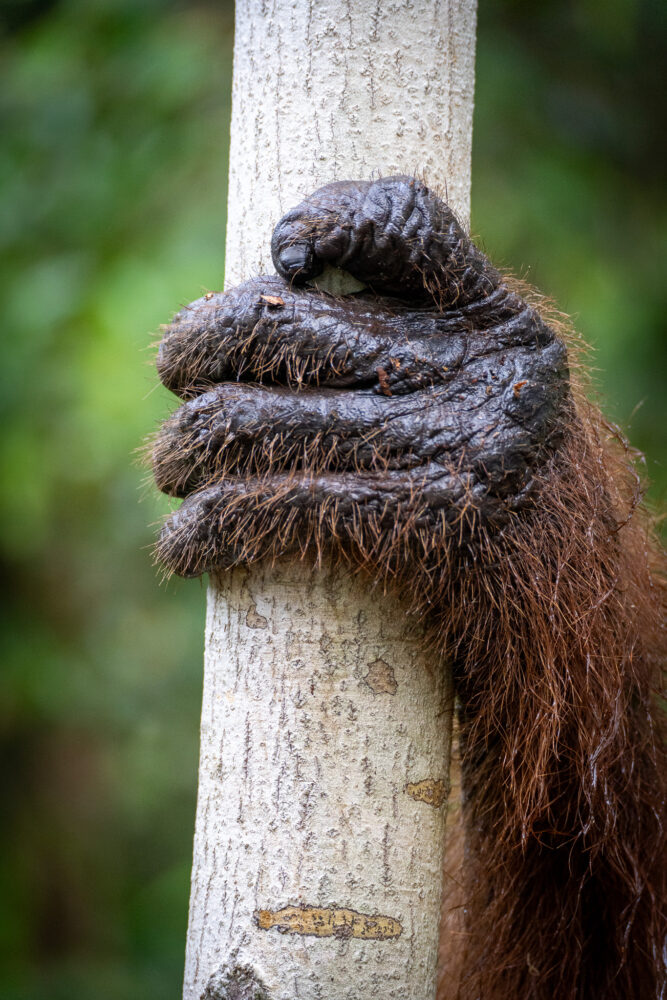

In Borneo, I got within 5 feet of Orangutans numerous times. This is where the big bucks are worth it. These Orangutans have been habituated to humans because of the research center established back in the 70s. Because of this, they will not be as scared and will be more curious about you. You do not need a zoom lens, you can get just fine photos with any phone camera. We saw dozens of Orangutans in the jungle from the boat and while visiting the feeding platforms throughout our journey. We also saw two wild orangutans from the boat.
Winner for Orangutan encounters: Borneo
Wildness Factor
As you might have already guessed from some of the stuff above, Sumatra is a far wilder experience than Borneo. But that’s not to say that Borneo is tame. The jungles here are dense, and the river cruise is a lovely scenic journey. But because of the research centers and feeding platforms (if you’re curious why those exist, just read my full Borneo blog post), it feels a little less natural than Sumatra’s rugged, untamed wilderness. That and you’re camping with the Sumatra experience.

Winner Wildness Factor: Sumatra
Other Wildlife to Spot
Both jungles have an abundance of other wildlife to spot. In Sumatra, you’ll encounter white-handed gibbons, Thomas’s Leaf Monkeys, Long-Tailed Macaques, and Pig-Tailed Macaques. In Borneo, you’ll see Proboscis monkeys, crocodiles, gibbons, and *potentially* sun bears. It all comes down to personal preference, but I LOVE the Proboscis Monkey, so I’ve gotta give this one to Borneo.
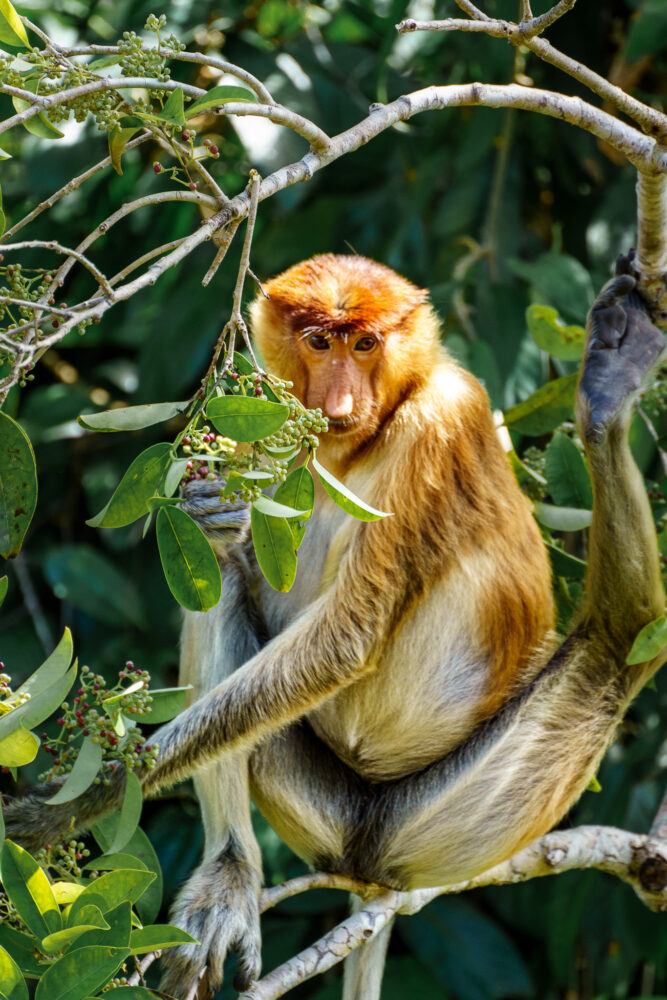
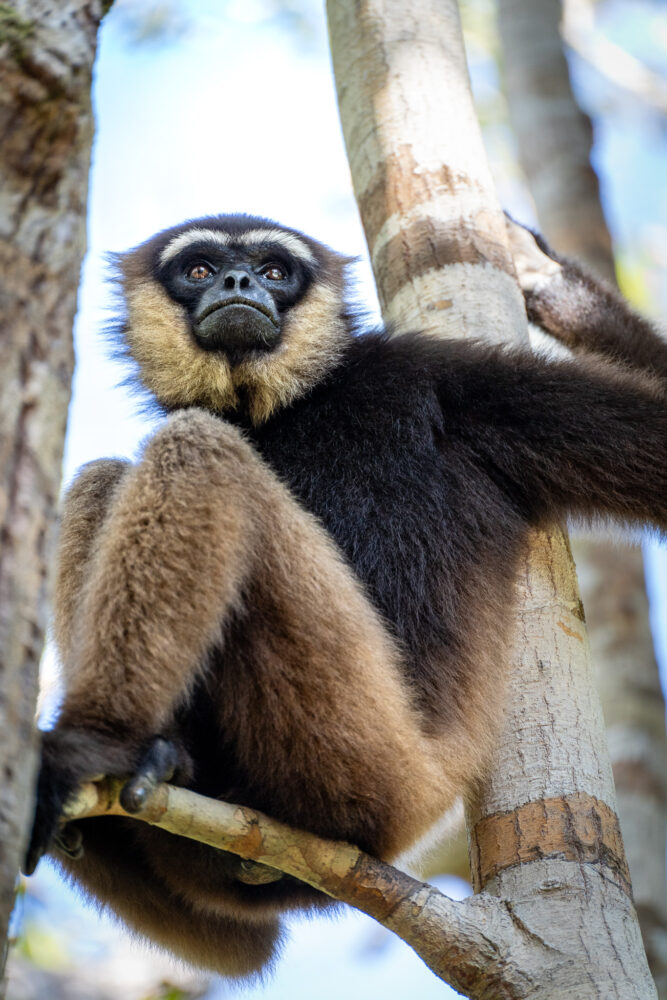

Winner of Other Wildlife to Spot: Borneo
What else would I do on my trip?
For some people, I understand that you might not want to plan an entire trip around spotting Orangutans. In this case, you might want to consider what else there is to do in the area. Borneo, for example, has very little to do. Almost nothing, in fact. The Indonesian portion of Borneo has little to offer unless you pop on a short flight to an entirely different portion of the island. In that case, however, you might as well fly to Bali or Java or any other Indonesian island that piques your interest.

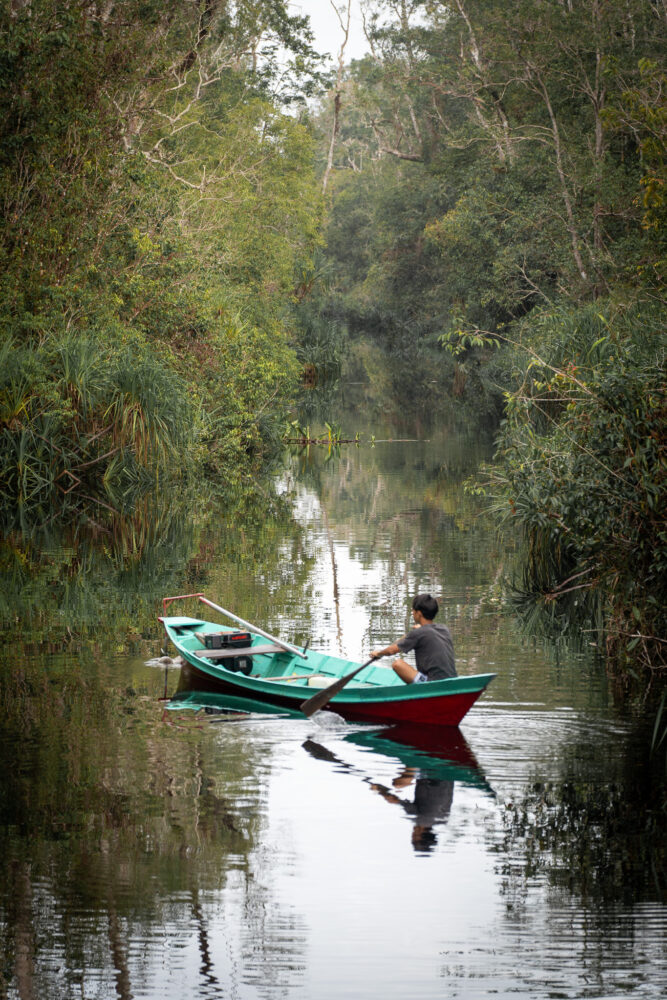
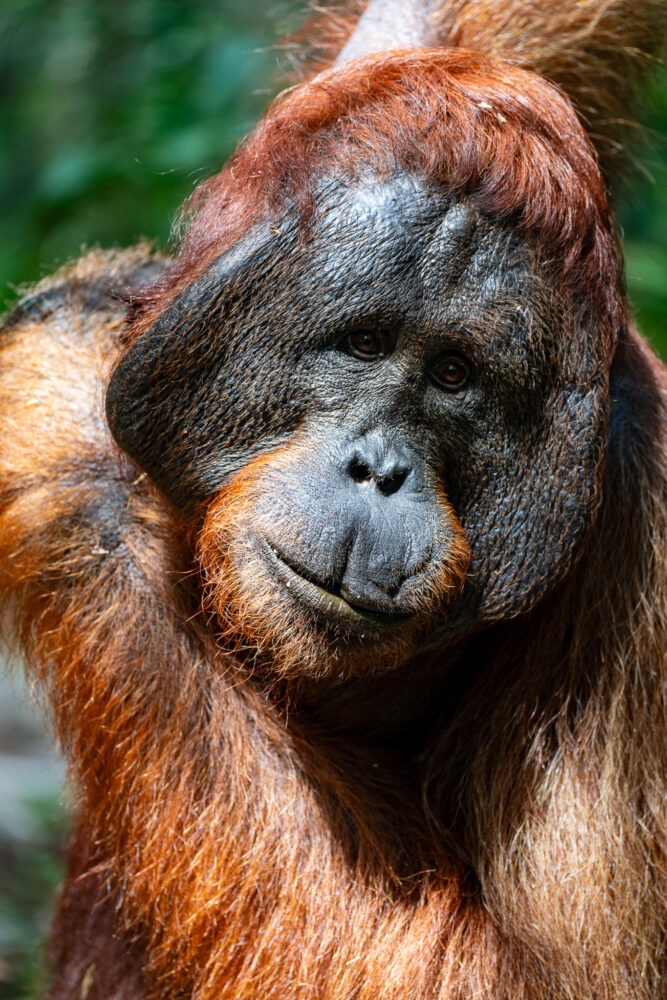
Sumatra, on the other hand, has quite a bit to do on the island. You can visit Lake Toba, its beautiful remote jungles, or the pristine islands off its southern coast. You can also just choose to stay for several extra days in Bukit Lawang, which is in itself, a lovely jungle town.
Winner Other Things to See: Sumatra. If you plan to stay on one single island, that is.
Family-Friendliness
I don’t have kids, but I know many of you do!
When we were traveling in Borneo, we saw loads of families! This is likely because of the more comfortable hotels in Pangkalan Bun, the lack of walking required, and the general lack of risk involved in the trip. You do get a slightly better deal price-wise with children.
While you could potentially bring children with you in Sumatra, due to the intense hiking and immersion in the jungle there is a much higher risk and you probably wouldn’t need to be at least 12 years old.
Winner: Borneo
Trekking to see Orangutans is an incredible experience—one that I am so thankful to have had twice!! My hope with this blog post is that it will help you decide where to see Orangutans in the wild, choosing between two premiere orangutan spotting destinations so that you can have this once-in-a-lifetime experience, too.
Save This Post on Where to See Orangutans in the Wild For Later!
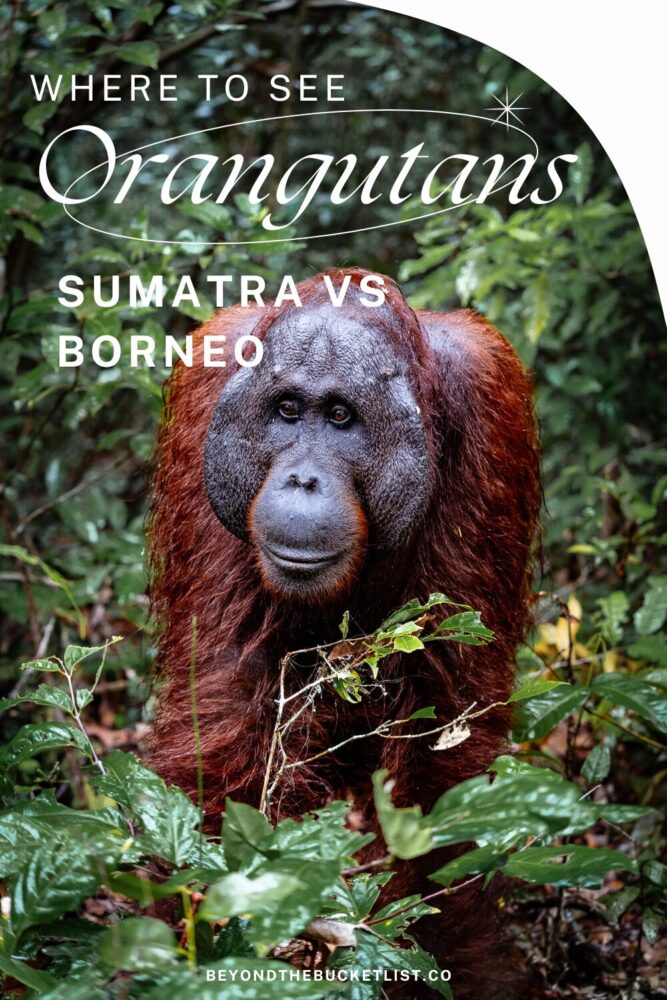
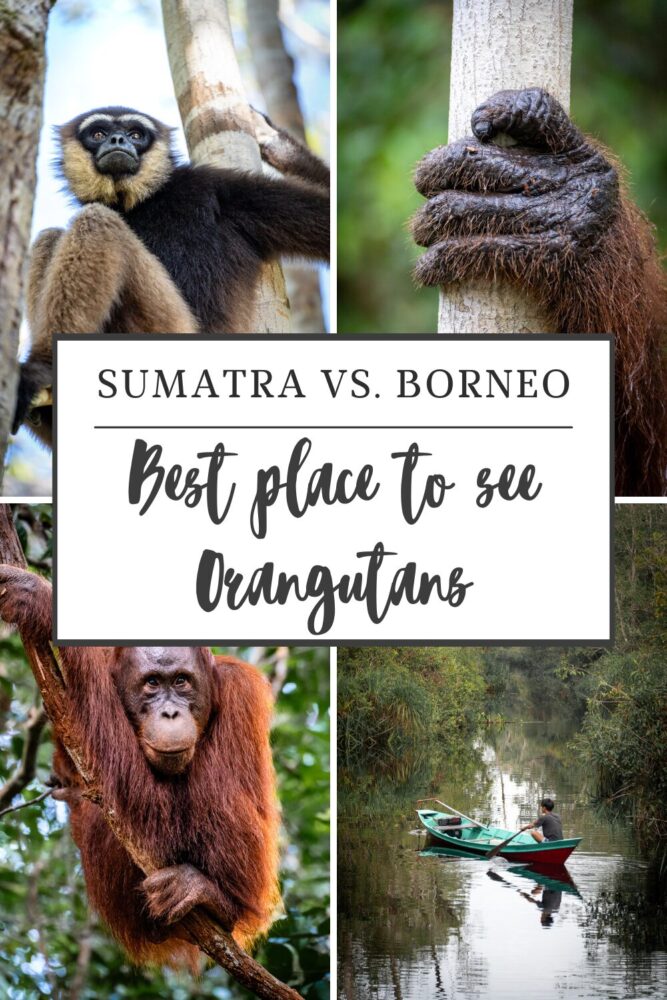
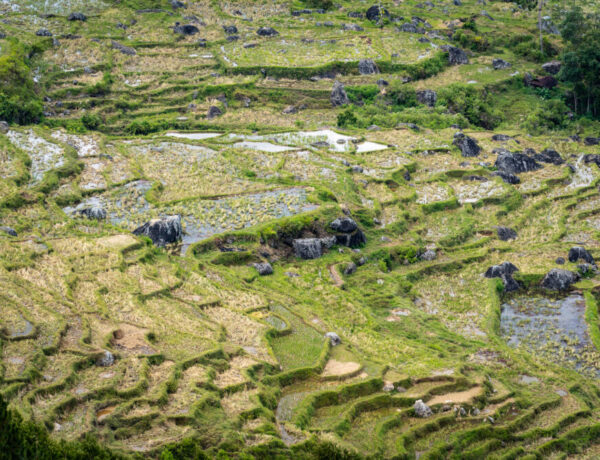
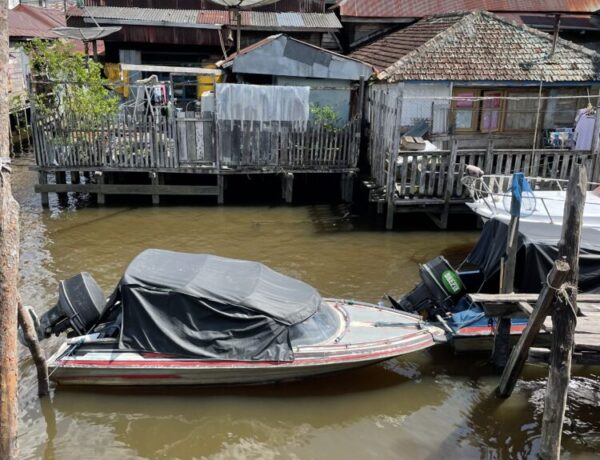
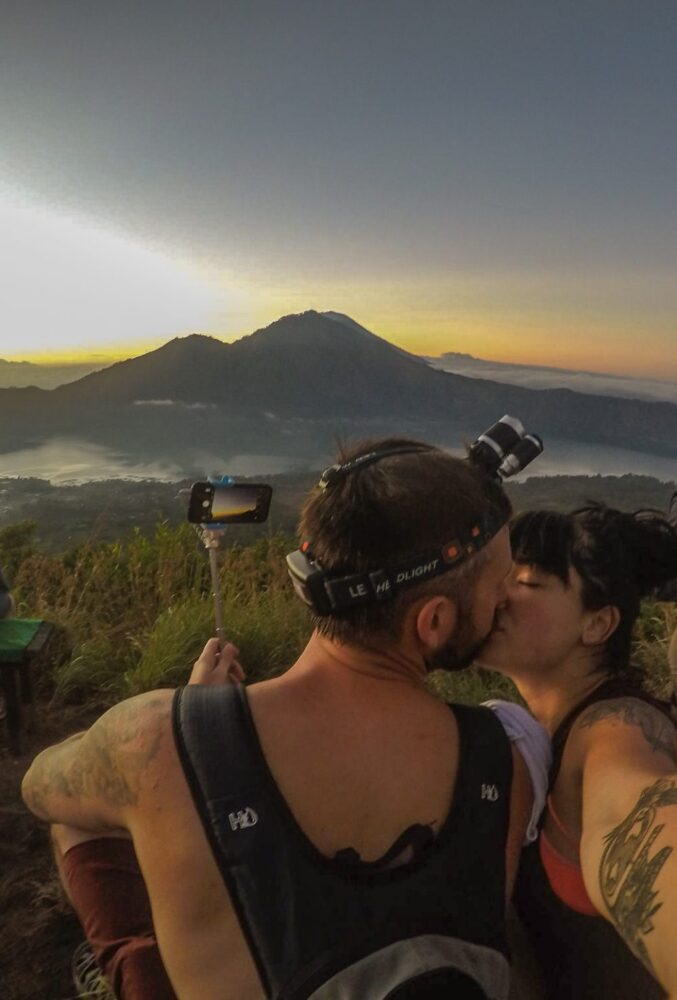


1 Comment
Tanisha kaur
October 7, 2024 at 1:11 am“Sumatra or Borneo? Best spots to see wild orangutans! 🦧🌿 #WildlifeAdventure”